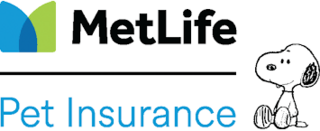9 Best Pet Insurance Companies of July 2025
What to know about pet insurance
- Pet insurance reimburses you for diagnostic tests, hospitalization, surgery and more if your pet gets sick or injured
- Though pet insurance seems similar to health insurance, it works more like your car or home insurance policy. You pay upfront then file an insurance claim for reimbursement
- Much like your home insurance doesn't pay for cleaning your gutters or sealing your roof, pet insurance doesn't cover routine care like vaccinations and annual check-ups
- It's important to enroll your pet when it's young and healthy in order to avoid pre-existing condition clauses
How we chose our top picks
At Money Magazine, we have been helping readers navigate personal finance since 1972. Our editors and writers evaluate insurance companies independently, ensuring our content is precise and guided by editorial integrity. To identify the best providers on the market, we've dedicated 1,000+ hours to researching, comparing and analyzing 50+ data points from 19 pet insurance companies.
Read the full methodology to learn more.
Our Top Picks for Best Pet Insurance of July 2025
- AKC - Best for Pre-Existing Conditions
- Embrace - Best for Healthy Pet Discount
- Figo - Best for Reimbursement Options
- Lemonade - Best for Fast Claims Processing
- MetLife - Best for Multiple Pets
- Nationwide - Best for Exotic Pets
- Pets Best - Best for Treatment of Mobility Issues
- Pumpkin - Best for Puppies and Kittens
- Spot - Best for Unlimited Coverage
- Offers supplemental accident and illness coverage for breeding pets
- Direct payments to vets available under certain conditions
- 24/7 vet hotline available to policyholders
- Coverage for congenital and hereditary conditions costs extra
- No dental coverage except tooth extractions due to injury
- 6-month waiting period for orthopedic conditions coverage
- Plan options
- Accident and illness, accident-only, preventive care
- Annual payout limit
- $2.5K, $5K, $7.5K,$10K, $15K, 20K, unlimited
- Reimbursement rates
- 70%, 80%, 90%
- Annual deductible
- $100, $250, $300, $400, $500, $600, $750, $1K
- Waiting periods
- 2 days for accidents, 14 days for illnesses
- Discounts
- Multi-pet
Why we chose AKC: The American Kennel Club’s (AKC) pet insurance policy offers unprecedented coverage for pre-existing conditions. It covers illnesses and injuries sustained before the policy's effective date or during the waiting period.
To qualify, you must keep the policy active for 365 days. Any pre-existing issue that was initially excluded will be fully covered once the waiting period elapses and the policy renews. You can also pay extra for preventive care and coverage for end-of-life expenses, veterinary exam fees, behavioral therapy and issues related to breeding.
AKC's coverage lacks in other respects. There’s no coverage for dental illnesses, and hereditary and congenital conditions coverage (HereditaryPlus rider) is sold separately. Residents of Florida, California and Washington must enroll their pet before its second birthday to qualify for this add-on.
- High upper age limit for enrollment
- High annual reimbursement limit option compared to other competitors with annual caps
- Includes up to six months of pet travel insurance
- Limited wellness benefits
- Caps dental illness coverage at $1,000 a year
- Patellar luxation and hip dysplasia are excluded for six months
- Plan options
- Accident and illness, accident-only
- Annual payout limit
- $5K, $8K, $10K, $15K, $30K
- Reimbursement rates
- 70%, 80%, 90%
- Annual deductible
- $100, $250, $500, $750, $1K
- Waiting periods
- 14 days for illnesses
- Discounts
- Multi-pet, military and healthy pet
Why we chose Embrace: Embrace pet insurance is one of the few companies that offer a discount for keeping your pet healthy. If you don't exceed $300 in claims in the year prior to the discount period, you can earn 5% off your monthly premium the first year you qualify. The discount increases to 10% if you also qualify the following year.
Embrace is also the insurer behind USAA's pet insurance policy, a members-only financial services company with excellent customer satisfaction ratings. Military members, veterans and eligible relatives can access all of Embrace’s pet insurance benefits at a 25% discount.
Policyholders should note that the company caps dental illness coverage at $1,000 per year. Additionally, an extended waiting period of six months applies to Intervertebral Disk Disease (IVDD), cruciate ligament injuries, patellar luxation and hip dysplasia. Finally, there's no coverage for natural supplements, vitamins or food.
- Up to 100% reimbursement with no annual limits
- No upper age enrollment limit
- Low deductible options
- Most affordable premiums
- 1-day waiting period for accidents
- No coverage on hereditary conditions if the pet is enrolled after 2nd birthday
- Low payout limits in wellness care plan
- Vet exam fees and physical therapy coverage require separate riders
- Plan options
- Accident and illness, wellness rider
- Annual payout limit
- $5K,$10K, unlimited
- Reimbursement rates
- 70%, 80%, 90%, 100%
- Annual deductible
- $100, $250, $500, $750, $1K
- Waiting periods
- 1 day for accidents, 14 days for illnesses
- Discounts
- Multi-pet
Why we chose Figo: Most competitors offer only up to 90% reimbursement. Figo stands out because pet owners can choose up to 100% reimbursement without annual payout limits and avoid copayments entirely.
Figo offers pet owners the option to reduce their copayment to 0%, thanks to its 100% reimbursement option. (Generally, the lowest copayment provided by other insurers is 10%.). The company also offers several endorsements that add coverage for pet boarding, lost or stolen pets (advertising costs and the value of the pet if it isn't found) and pet liability insurance.
Notable downsides include strict limits on its coverage for hereditary conditions such as hyperthyroidism, renal disease and intervertebral disc disease (IVDD). These issues are excluded if the pet is enrolled after its second birthday. Additionally, Figo offers exam fee reimbursement and physical therapy as separate riders, while other insurers include these benefits in their base policy.
- Quick claims processing — in minutes rather than weeks via mobile app
- Multiple discounts available
- A portion of payments go to charities
- Customizable coverage
- Only available in 38 states
- Policies can only be adjusted at renewal
- Older pets may not be eligible for coverage
- Plan options
- Accident and illness, wellness rider
- Annual payout limit
- $5K, $10K, $20K, $50K, $100K
- Reimbursement rates
- 70%, 80%, 90%
- Annual deductible
- $100, $250, $500
- Waiting periods
- 2 days for accidents, 14 days for illnesses
- Discounts
- Multi-pet
Why we chose Lemonade: Lemonade is our top pick for speedy claims because the company uses novel, AI-powered processing, which promises to deliver claims very quickly via the Lemonade app. The ability to direct a part of the company’s profit to a charity of your choice may also appeal to many pet owners.
Lemonade is only available in 38 states, but you can sign up for updates on its website. Users may also find Lemonade’s website hard to navigate. To get a quote, you have to input a lot of information that other insurers don’t require. Also, if you have questions the automated chat can’t answer, talking with a live agent via chat isn’t possible.
- Fast accident-only coverage
- Low and no-deductible plans available
- 24/7 telehealth service
- Diminishing deductible
- No standalone accident-only plan
- Terms and conditions vary by underwriter
- 6-month waiting period for cruciate ligament problems applies in some states
- Plan options
- Accident and illness
- Annual payout limit
- $1,000 to $25,000
- Reimbursement rates
- $50, 65%, 70%, 80%, 90%
- Annual deductible
- $0 to $2,500
- Waiting periods
- Same-day coverage for accidents, 14 days for illnesses, 6 months for orthopedic conditions
- Discounts
- Multi-pet discount and diminishing deductible
Why we chose Metlife: With MetLife, pet owners with multiple pets don’t have to stress about meeting a separate deductible for each animal. Policyholders can enroll up to three animals under one plan and each eligible vet visit contributes towards the same deductible. Once the deductible is met, every pet is eligible for coverage for the remainder of the year.
MetLife’s coverage terms are also much more flexible than those of other providers on the market. Pet owners can select a deductible between $0 and $2,500 and an annual limit between $1,000 and $25,000. However, MetLife enforces a six-month waiting period for cruciate ligament issues and other orthopedic conditions without the option to qualify for a waiver.
- No per-incident, annual or lifetime caps
- Covers alternative therapy for diagnosed conditions
- Direct payments available under certain conditions
- Limited coverage for hip dysplasia
- 12-month waiting period for knee injuries
- No coverage for behavioral issues or prescription food
- Plan options
- Accident and illness, preventive care plan
- Annual payout limit
- $10K
- Reimbursement rates
- 50% or 70%
- Annual deductible
- $250
- Waiting periods
- 14 days for accidents and illnesses
- Discounts
- Multi-pet
Why we chose: Nationwide is the only pet insurance company of its size that offers insurance for avian and exotic pets.
The Avian & Exotic Pet Plan covers most birds, rabbits, reptiles and small mammals, including goats and pot-bellied pigs. (Note that any animal not explicitly listed on the Nationwide website isn’t eligible, including those listed under venomous or endangered species.) Owners of exotic pets can select up to 90% reimbursement for covered accidents and illnesses and add preventive care riders as well. Just as with dog and cat insurance, pre-existing conditions are excluded from coverage.
Cat and dog insurance is easy to get directly on Nationwide's website. However, exotic pet owners must call (844-244-3691) to get a quote or sign up. Additionally, cat and dog owners have to wait 12 months to get coverage for cruciate ligament issues — double the time of similar waiting periods.
- Coverage for prosthetic devices and wheelchairs
- Wide range of deductibles
- Covers pets as young as seven weeks with no upper age limit
- Direct payments to vets available upon request
- Slow claims processing
- Excludes alternative therapy and behavioral modification
- Policy upgrades are not available until the renewal date
- Plan options
- Accident and illness, accident-only, wellness rider
- Annual payout limit
- $2.5K, $5K, $10K, unlimited
- Reimbursement rates
- 70%, 80%, 90%
- Annual deductible
- $50, $100, $250, $500, $1K
- Waiting periods
- Varies by state. 0 to 3 days for accidents, 14 days for illnesses, 1 to 6 months for cruciate ligament conditions
- Discounts
- Multi-pet
Why we chose Pets Best: Pets Best has a wide range of coverage options and deductibles, and it offers pet insurance for cats and dogs as young as seven weeks. It’s also one of the few pet insurance companies that cover prosthetic devices and wheelchairs. Pets Best provides coverage for wheelchairs and prosthetic devices when prescribed by a veterinarian to treat a covered accident or illness.
A notable downside is that cruciate ligament conditions and any related complications are subject to a six-month waiting period. Pet owners can waive the accident and illness waiting period with a medical exam on the same day they purchase coverage, but this waiver doesn't apply to cruciate ligament issues.
- Preventive care packages for the particular needs of puppies and kittens
- No upper age limit
- Short (14-day) waiting period for all health conditions, including knee and hip dysplasia
- Covers exam fees at no extra cost
- No customizable reimbursement levels
- No accident-only option
- Preventive plan doesn't cover spay/neuter or dental cleanings
- Most expensive option in our survey
- Plan options
- Accident and illness, wellness rider
- Annual payout limit
- $10K, $20K, unlimited
- Reimbursement rates
- 90%
- Annual deductible
- $100, $250, $500, $1K
- Waiting periods
- 14 days for accidents and illnesses
- Discounts
- Multi-pet
Why we chose Pumpkin: Pumpkin offers extensive insurance and non-insurance preventive care options tailored to junior animals. Pumpkin's puppy preventive care pack includes one annual wellness exam fee, four puppy vaccines and one yearly fecal test. It will also refund the cost of up to four vaccines your puppy may have received prior to being insured under the preventive pack, as well as cover lab tests for parasites.
Pumpkin offers comprehensive accident and illness coverage with some standout benefits: microchip implantation, stem cell therapy and a pet poison control consultation fee. Pet owners are free to call the ASPCA Poison Control Center or the Pet Poison Helpline (and maybe save themselves a trip to the emergency room) without worrying about paying $85-$95 for the phone call.
Pumpkin charges some of the highest premiums out of all the companies we surveyed. And customers can't customize the reimbursement rate in order to find a rate that suits their budget.
- Unlimited annual coverage available
- No upper age limit
- 24/7 telehealth helpline
- Pet owners have 270 days (around eight months) to file a claim
- Higher-than-average premiums for young pets
- Charges transaction fees for monthly, quarterly or semi-annual payments
- Plan options
- Accident and illness, accident-only, wellness rider
- Annual payout limit
- $2.5K, $3K, $5K, $7K, $10K or unlimited
- Reimbursement rates
- 70%, 80% or 90%
- Annual deductible
- $100, $250, $500, $750 or $1K
- Waiting periods
- 14 days for accidents and illnesses
- Discounts
- 10% employee, 10% multi-pet
Why we chose Spot: We picked Spot as the best for unlimited coverage because it caters to pet parents who want to maximize their pet’s coverage, no matter the cost. Spot is also a fine choice for older pets since there’s no age limit for coverage.
Spot's full (100%) coverage option allows you to maximize your pet's coverage, meaning you are not responsible for any co-payment. In addition, the company offers a very low ($100) deductible option, which further reduces your out-of-pocket payments for care. That said, choosing one or both of a low co-payment and a low deductible will lead to higher premiums for the policy.
That said, unlimited annual coverage comes at a high cost and Spot’s prices are already higher than the norm for young pets.
Other companies we considered
Our pet insurance comparison table includes our top picks as well as other insurance agencies that stood out in some respects but didn't quite match the strengths of our top picks.
Healthy Paws
Why it didn't make the cut: Healthy Paws offers a comprehensive accident and illness plan with unlimited payout limits and 90% reimbursement. However, two factors kept the company out of our top picks: 1) There is no coverage for hip dysplasia for pets enrolled after age six, and 2) the company doesn’t distinguish between curable and incurable pre-existing conditions.
Read Healthy Paws Pet Insurance full review
ASPCA
Why it didn't make the cut: Both ASPCA and Spot provide identical insurance policies. Ultimately, Spot made it to our top picks due to its unlimited annual payout feature, which is not available with ASPCA, and its 24/7 pet telehealth helpline.
Read ASPCA Pet Insurance full review
Fetch by The Dodo
Why it didn't make the cut: Although Fetch has a 15-day waiting period for most illnesses and injuries, it has a six-month waiting period for hip and knee injuries. The extended waiting period can be waived for knee conditions if there is a veterinary exam within the first 30 days, but the waiver does not apply to hip-related injuries. Additionally, the company doesn’t sell preventative or wellness coverage.
Read Fetch Pet Insurance full review
Many Pets
Why it didn't make the cut: Many Pets’ accident and illness coverage isn’t available in all states and it has more restrictions than other leading companies. For example, pets older than 14 years are not eligible for coverage, and the company won’t cover treatments for hip dysplasia in pets that were enrolled after the age of six.
Read Many Pets Pet Insurance full review
What You Need To Know About Pet Insurance
Pet insurance might seem similar to our own health insurance but there are key differences to keep in mind. In this section, we explain the ins and outs of pet insurance policies so you know what to expect in terms of coverage, cost and claims.
What does pet insurance cover?
Pet insurance covers diagnostic tests, hospitalization, surgery, prescription medication and long-term treatment for accidents and chronic conditions such as allergies or diabetes. Most policies also cover medically necessary physical and behavioral therapy.
As with most insurance policies, there are exclusions. Pet insurance doesn't cover routine care, pre-existing conditions or injuries due to owner negligence.
Check out our pet insurance coverage guide for more information.
How does pet insurance work?
Pet insurance has no network restrictions, so you can take your pet to any licensed specialist. Coverage begins after you've met the policy's deductible and after a waiting period of one to 14 days (the exact number depends on whether the issue is an accident or illness).
Once you meet the deductible, you'll pay the vet bill and file for reimbursement — unless your insurer offers direct payments to vets. Most insurers cover 70% to 90% of the bill, leaving you to pay the remaining amount. Annual reimbursement limits apply and reset each year upon renewal.
While insurance premiums don’t increase after a claim, they can rise by 20% to 30% annually based on your pet’s age and veterinary costs in your area.
Types of pet insurance
Accident & illness policy
Accident coverage
Wellness riders
Covers diagnosis, surgery, hospitalization, treatment and medications for any covered accident or illness.
Pays only for the treatment of sudden accidents or injuries (e.g., poisonings, broken bones or bloating).
Reimburses policyholders for services such as vaccinations, microchipping, dental cleanings and heartworm prevention.
How much is pet insurance?
According to NAPHIA’s 2025 State of the Industry Report, the average cost of pet insurance for cats is $29 a month while dog insurance plans cost about $49 a month. In our sample of providers, the cheapest pet insurance quotes for a young pet were $15 per month for cats and $40 for dogs.
The price jumped to prohibitive amounts for a 10-year-old dog. The cheapest rate was $139 a month.
If you’re on a tight budget, check out our reviews of the best cheap pet insurance.
Factors that affect your pet insurance costs:
- Type of policy: Accident and illness policies cost more than wellness plans or accident-only policies.
- Type of animal: Dog insurance costs twice as much as cat insurance.
- Pet’s age: Premiums increase with age.
- Pet’s breed: It costs more to insure purebreds prone to congenital or hereditary conditions than to insure mixed-breed dogs.
- Pet’s size: Insuring larger dogs or cats will cost more than insuring small or toy-sized animals. However, smaller breeds tend to live longer, so you’ll pay more over their lifetime.
- Where you live: Pet insurance costs more in states with expensive vet costs, like California and New York.
Additional out-of-pocket expenses
The cost of pet insurance is not limited to premium payments. Unless you purchase a policy with 100% reimbursement, unlimited payouts and no deductibles, you’ll have to cover some expenses yourself.
- Exam or office fees: Veterinarians and emergency vet care clinics charge an exam fee that's separate from diagnostic or treatment costs. Most insurers exclude this fee from coverage, which then amounts to a hidden deductible of $30 to $100 for each visit.
- Deductible: You’ll need to meet the policy's deductible before the insurance company starts reimbursing you. It might take a few vet visits to reach the dollar amount, especially if you set a high deductible.
- Copay: Plans typically pay 70% to 90% of eligible veterinary services. The remaining 30% to 10% comes out of your own wallet.
- Payout caps: Pet insurance will not pay once you reach the policy’s maximum coverage amount for the year. Some insurers also set lower coverage caps for behavioral modification, dental care and end-of-life expenses.
Is pet insurance worth it?
Some pet owners might regret spending thousands on insurance if their pet stays healthy, thinking a credit card or savings account might have been more cost-effective. However, for pets facing health issues, insurance can be vital. Dr. Karen Halligan, host of Collars and Cents, points out that advanced treatments like "$35,000 stem cell transplants or open-heart surgery" are now possible, and "the big difference is the insurance."
Pet insurance can offer some peace of mind amid rising vet care costs. Dr. Lindsey Butzer of Clint Moore Animal Hospital highlights that financial limitations often lead to euthanasia or delays in treatment: "People won't pay for their dog over their groceries," she says.
How to choose the best pet insurance plan
Follow these steps to find the best policy for your pet:
Decide between an accident-only or accident and illness policy:
An accident and illness plan may be worth it if you're enrolling a young and healthy pet. (This is the only way to avoid exclusions for pre-existing conditions). Accident-only plans, on the other hand, are suitable for budget-conscious pet owners who want a safety net for serious accidents.
Study the policy's coverage
In general, every pet insurance policy covers diagnostics, surgery, medication, and treatment. However, there can be differences in the fine print. For instance, some insurers cover dental injuries and illnesses while others only cover the cost to extract a tooth after an accident.
The best pet insurance policies also cover exam fees, behavioral therapy, and prescription medications. Some may even pay vets directly. It’s also a good idea to look into the policy's dental care coverage. Be sure to ask about coverage for periodontal disease, age limits for congenital dental problems, and whether all teeth are covered.
Compare waiting periods
Most pet insurance companies make you wait 14 days before you can file a claim. If you want fast coverage, look for companies that offer shorter waiting periods for accidents of one to three days.
Orthopedic waiting periods are another factor to consider. Pet owners typically have to wait six to 12 months for joint injuries and hip dysplasia coverage. If your pet's breed is prone to these issues (which can develop in puppyhood), it's important to enroll them as young as possible.
Select the policy's terms
Most providers let you choose your policy's reimbursement rate, deductible and annual coverage limit. Reimbursement rates range from 70% to 100%, covering that portion of the bill.
Annual limits can range from as low as $5,000 to unlimited, with higher limits costing more.
Compare pet insurance quotes
You'd be surprised at how much prices can vary between insurance companies; some insurers quote double the price of others for similar coverage. Pet insurance comparison sites like Petted Insurance, Pawlicy Advisor or Pet Insurer can help you find the best deal.
Check out our guide on how to buy pet insurance for more information.
How to save on pet insurance
When it comes to premiums, there’s not much you can do about your zip code, your pet’s breed or age but you can tweak coverage levels to fit your budget:
- Payout caps: Higher coverage limits translate to higher premiums. To pick the right payout cap, check the average cost of treatment in your area for breed-specific illnesses and common injuries.
- Reimbursement percentage: A low reimbursement percentage means you’ll pay less in premiums. However, this also means you’ll have a higher copayment.
- Deductibles: The higher the deductible, the lower your premium. Choosing a higher deductible can save you money if your pet remains healthy. However, if your pet suddenly becomes ill or injured, you'll have to pay more out of pocket before your insurance starts covering costs.
Methodology
To identify the best pet insurance companies of 2025, we reviewed 19 companies across 50 data points, which can be summarized as follows:
- Basic coverage: Our top picks cover exam fees, diagnostic testing, treatment, surgery, medications and hospitalizations for accidents and illnesses. We skipped companies that didn't cover curable pre-existing conditions, as this would mean that one-time ailments such as respiratory infections or a stomach bug could potentially be excluded.
- Extra benefits: Not all providers cover alternative therapies, behavioral modification, telehealth services or offer 24/7 vet support. We also took note of providers that offer coverage for non-health-related issues, such as advertising for lost or stolen pets and pet boarding in the event the owner falls ill.
- Limitations and exclusions: We reviewed the provider's upper age limits and cut-off points for coverage. Many accept pets regardless of age, some issue only accident-only policies after the pet reaches a certain age and others deny coverage if the pet is too old. We also identified any additional lifetime or per-incident payout limits that could increase a buyer's out-of-pocket expenses.
- Affordability: We gathered sample quotes using the pet profiles of a one-year-old Labrador Retriever and a one-year-old domestic shorthair cat from Mami, Florida. With that data, we identified which insurers offer the best rates for similar coverage.
- Availability: Most pet insurance providers are licensed to sell policies in all 50 states. And once you have a policy, you can typically visit any licensed veterinarian in the U.S., Canada and any U.S. military base overseas. We excluded companies that issued policies with limited membership and insurers that resell policies from other providers.
- Customizability: Multiple deductible, payout, and reimbursement options allow policyholders to tweak the coverage details to get a premium within their budget. Most providers allow this flexibility.
- Ease of use: Most pet insurance companies do well in this regard, featuring streamlined quote tools, well-designed websites and mobile apps.
Latest News in Pet Insurance
Last April, Florida Gov. Ron DeSantis signed House Bill 655 into law, a measure to regulate the pet insurance industry. The 15-page document targets deceptive practices such as advertising pet wellness plans as insurance and failing to disclose whether chronic and pre-existing conditions are covered.
Pet insurance has gotten so expensive that pet owners are considering cancelling their policies and going without coverage. If it were any other type of insurance, they could shop around and switch companies but pre-existing condition clauses make it so that pet owners can't switch provider without losing coverage.
The price hike is mainly attributed to inflation and the increasing cost of veterinary care. Some insurers are also backing out of the industry. Just last year, Nationwide pet insurance abruptly cancelled coverage for about 100,000 pets because the policies weren't profitable anymore. The insurer is now subject to a class action lawsuit that alleges Nationwide falsely promised consumers it wouldn't cancel coverage due to a pet's age or medical condition.
Pet Insurance FAQ
How much is a vet visit?
Without insurance, a routine veterinary visit for a cat or dog may range from $50 to $300. Emergency visits can be significantly more expensive, depending on the severity of the situation and required care. Addressing specific health issues also incurs higher costs.
For example, according to Healthy Paws's 2024 Cost of Veterinary Care report, skin conditions were the most common insurance claim for dogs, with bills averaging $200 to $2,500. Similarly, gastritis was the most common condition in cats, with reimbursement claims ranging from $1,500 to $1,800.
What is the best pet insurance?
What is the best pet insurance for dogs?
The best pet insurance for dogs (much like pet health insurance for cats) covers the veterinary services your pet will need if they get seriously sick or injured. This includes surgeries, hospitalization, diagnostics, treatment and medication. The best insurers also offer exam fee and wellness coverage, and most cover alternative therapies and behavioral modification at no extra cost.
Get a quote from any of our top picks — Spot, AKC, Lemonade , Embrace, Pets Best, Figo and Pumpkin — to see which of their dog pet insurance plans is the best for your pup.
How does pet insurance know about pre-existing conditions?
What is a good annual limit for pet insurance?
Summary of Money’s Best Pet Insurance Companies of July 2025
- AKC - Best for Pre-Existing Conditions
- Embrace - Best for Healthy Pet Discount
- Figo - Best for Reimbursement Options
- Lemonade - Best for Fast Claims Processing
- MetLife - Best for Multiple Pets
- Nationwide - Best for Exotic Pets
- Pets Best - Best for Treatment of Mobility Issues
- Pumpkin - Best for Puppies and Kittens
- Spot - Best for Unlimited Coverage























